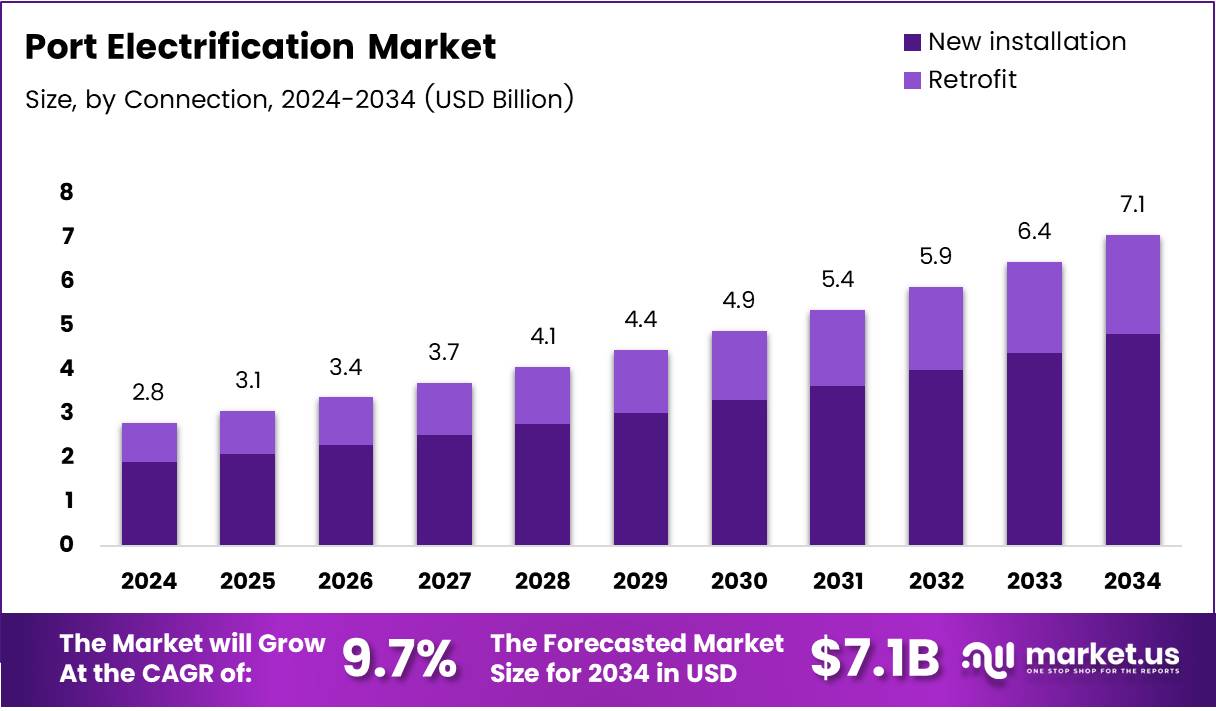Market Overview
The automotive blind spot detection system market has emerged as a vital segment of the broader ADAS market, gaining significant traction in recent years. Blind spot detection systems are designed to alert drivers about the presence of other vehicles or objects in areas that are not visible through traditional mirrors—commonly known as the "blind spot." These systems utilize radar sensors, cameras, and ultrasonic technologies to monitor adjacent lanes and provide timely alerts, thereby enhancing vehicle safety.
The global automotive blind spot detection system market size is expected to reach USD 38.68 billion by 2032, according to a new study by Polaris Market Research.
As automakers ramp up investments in smart mobility and governments introduce stringent vehicle safety norms, blind spot detection systems are becoming a standard offering in both luxury and mid-range vehicles.
Key Market Growth Drivers
1. Rising Demand for Safety and Comfort
Consumer awareness surrounding road safety has surged in the past decade. The World Health Organization reports over 1.3 million road traffic deaths annually, many of which are attributed to lane-change and side-impact collisions. As a result, vehicle manufacturers are prioritizing the integration of safety features such as lane change assist, collision avoidance system, and blind spot monitoring.
OEMs are increasingly equipping new vehicles with blind spot detection technologies as part of their standard or optional safety packages. Furthermore, aftermarket solutions are now widely available, making this safety feature more accessible for older vehicles.
2. Stringent Government Regulations
Governments across North America, Europe, and parts of Asia have enacted safety regulations mandating the inclusion of advanced driver-assistance systems in vehicles. In the European Union, the General Safety Regulation mandates the inclusion of multiple ADAS features, including blind spot monitoring, for all new vehicles sold after 2024.
Similarly, the U.S. National Highway Traffic Safety Administration (NHTSA) supports voluntary guidelines that promote the integration of blind spot detection systems. These regulatory frameworks act as key catalysts for market growth, compelling both OEMs and aftermarket players to accelerate product development and deployment.
3. Integration with ADAS and Autonomous Driving
Blind spot detection is increasingly being integrated into more comprehensive driver assistance systems, including autonomous emergency braking (AEB) and adaptive cruise control. As vehicles progress toward higher levels of autonomy, blind spot systems play a crucial role in ensuring safe maneuvering, particularly during lane changes and overtaking.
This integration enhances the value proposition of blind spot detection systems, making them essential components in the evolution toward semi-autonomous and fully autonomous vehicles.
4. Growing Penetration of Electric and Luxury Vehicles
The rise of electric vehicles (EVs) and premium vehicle segments has fueled the adoption of advanced safety features. Companies like Tesla, BMW, Mercedes-Benz, and Audi are leading the charge in integrating comprehensive safety technologies, including blind spot monitoring, as a standard or optional feature. As EV sales continue to climb, this trend is expected to further expand the blind spot detection market.
𝐄𝐱𝐩𝐥𝐨𝐫𝐞 𝐓𝐡𝐞 𝐂𝐨𝐦𝐩𝐥𝐞𝐭𝐞 𝐂𝐨𝐦𝐩𝐫𝐞𝐡𝐞𝐧𝐬𝐢𝐯𝐞 𝐑𝐞𝐩𝐨𝐫𝐭 𝐇𝐞𝐫𝐞
https://www.polarismarketresearch.com/industry-analysis/automotive-blind-spot-detection-system-market
Market Challenges
Despite the promising growth trajectory, the blind spot detection system market faces several challenges:
High Cost of Implementation
One of the primary barriers to widespread adoption is the high cost associated with these systems. Blind spot detection technologies involve sophisticated sensors, software algorithms, and hardware integration, which can add significantly to the manufacturing cost of a vehicle. This cost barrier is particularly pronounced in emerging markets, where price sensitivity is high.
Technical Limitations and False Positives
While blind spot monitoring systems are generally reliable, they are not immune to errors. False alerts and system malfunctions due to poor weather, sensor obstruction, or calibration issues can compromise user trust and system effectiveness. Manufacturers must continue to refine algorithms and sensor technologies to enhance accuracy and reliability.
Privacy and Data Concerns
As blind spot detection systems become part of broader vehicle telematics and connected car ecosystems, concerns around data privacy and cybersecurity are gaining traction. Ensuring secure communication between sensors, ECUs, and vehicle networks remains a significant challenge for OEMs and system developers.
Regional Analysis
North America
North America is currently the largest market for automotive blind spot detection systems, driven by strong regulatory support and high consumer awareness of vehicle safety. The U.S., in particular, has seen rapid adoption of ADAS features across both luxury and mid-range vehicles. Major automotive players in the region continue to invest in R&D to improve sensor technology and system integration.
Europe
Europe follows closely, with stringent safety regulations and strong presence of premium automotive brands fueling market demand. The EU’s safety mandates are expected to significantly boost adoption over the next five years. Germany, France, and the UK remain key contributors due to their advanced automotive manufacturing ecosystems.
Asia-Pacific
The Asia-Pacific region is projected to witness the fastest growth during the forecast period. Countries such as China, Japan, and South Korea are at the forefront of technological innovation and vehicle electrification. Increasing disposable incomes and a growing middle class in countries like India and Southeast Asia are also expected to drive market expansion as safety becomes a higher priority for consumers.
Latin America and Middle East & Africa
These regions are still in the early stages of adopting blind spot detection technologies. However, urbanization, rising vehicle ownership, and gradual regulatory improvements may open new growth avenues in the future.
Key Companies and Competitive Landscape
The global automotive blind spot detection system market is moderately consolidated, with several leading companies competing on the basis of technological innovation, product quality, and strategic partnerships.
Prominent Players Include:
Bosch Mobility Solutions: A pioneer in ADAS technology, Bosch offers state-of-the-art radar and camera-based blind spot detection solutions integrated with other safety systems.
Continental AG: Known for its robust sensor technologies, Continental provides scalable blind spot systems adaptable for various vehicle types.
Denso Corporation: A leading supplier to Japanese automakers, Denso focuses on compact, energy-efficient detection systems optimized for high-traffic environments.
Valeo S.A.: Valeo's innovations in radar-based sensing and smart software algorithms have positioned it as a major player in the European market.
Magna International: With a strong presence in North America, Magna offers complete ADAS packages including lane-keeping assist and blind spot monitoring.
Other notable companies include ZF Friedrichshafen AG, Autoliv Inc., Hyundai Mobis, and Aptiv PLC. Start-ups and niche players are also entering the market with specialized technologies and competitive pricing, especially in the aftermarket segment.
Conclusion
The automotive blind spot detection system market is on a clear upward trajectory, underpinned by growing demand for vehicle safety, regulatory pressure, and advancements in autonomous vehicle technologies. While challenges such as high implementation costs and technical limitations remain, continued R&D investment and government support are expected to unlock new opportunities.
As automakers increasingly commit to zero-accident goals and smarter mobility solutions, blind spot detection systems will remain at the forefront of the global push toward safer, more intelligent transportation.
More Trending Latest Reports By Polaris Market Research:
Wood Coatings Market
AI Video Generator Market
Anti-Migrating Agent Market
Waste to Energy Market
Green Data Center Market
U.S. Viral Vector And Plasmid DNA Manufacturing Market
Synchronous Condenser Market
Sandarac Market
Over-The-Top Devices And Services Market
Market Overview
The automotive blind spot detection system market has emerged as a vital segment of the broader ADAS market, gaining significant traction in recent years. Blind spot detection systems are designed to alert drivers about the presence of other vehicles or objects in areas that are not visible through traditional mirrors—commonly known as the "blind spot." These systems utilize radar sensors, cameras, and ultrasonic technologies to monitor adjacent lanes and provide timely alerts, thereby enhancing vehicle safety.
The global automotive blind spot detection system market size is expected to reach USD 38.68 billion by 2032, according to a new study by Polaris Market Research.
As automakers ramp up investments in smart mobility and governments introduce stringent vehicle safety norms, blind spot detection systems are becoming a standard offering in both luxury and mid-range vehicles.
Key Market Growth Drivers
1. Rising Demand for Safety and Comfort
Consumer awareness surrounding road safety has surged in the past decade. The World Health Organization reports over 1.3 million road traffic deaths annually, many of which are attributed to lane-change and side-impact collisions. As a result, vehicle manufacturers are prioritizing the integration of safety features such as lane change assist, collision avoidance system, and blind spot monitoring.
OEMs are increasingly equipping new vehicles with blind spot detection technologies as part of their standard or optional safety packages. Furthermore, aftermarket solutions are now widely available, making this safety feature more accessible for older vehicles.
2. Stringent Government Regulations
Governments across North America, Europe, and parts of Asia have enacted safety regulations mandating the inclusion of advanced driver-assistance systems in vehicles. In the European Union, the General Safety Regulation mandates the inclusion of multiple ADAS features, including blind spot monitoring, for all new vehicles sold after 2024.
Similarly, the U.S. National Highway Traffic Safety Administration (NHTSA) supports voluntary guidelines that promote the integration of blind spot detection systems. These regulatory frameworks act as key catalysts for market growth, compelling both OEMs and aftermarket players to accelerate product development and deployment.
3. Integration with ADAS and Autonomous Driving
Blind spot detection is increasingly being integrated into more comprehensive driver assistance systems, including autonomous emergency braking (AEB) and adaptive cruise control. As vehicles progress toward higher levels of autonomy, blind spot systems play a crucial role in ensuring safe maneuvering, particularly during lane changes and overtaking.
This integration enhances the value proposition of blind spot detection systems, making them essential components in the evolution toward semi-autonomous and fully autonomous vehicles.
4. Growing Penetration of Electric and Luxury Vehicles
The rise of electric vehicles (EVs) and premium vehicle segments has fueled the adoption of advanced safety features. Companies like Tesla, BMW, Mercedes-Benz, and Audi are leading the charge in integrating comprehensive safety technologies, including blind spot monitoring, as a standard or optional feature. As EV sales continue to climb, this trend is expected to further expand the blind spot detection market.
𝐄𝐱𝐩𝐥𝐨𝐫𝐞 𝐓𝐡𝐞 𝐂𝐨𝐦𝐩𝐥𝐞𝐭𝐞 𝐂𝐨𝐦𝐩𝐫𝐞𝐡𝐞𝐧𝐬𝐢𝐯𝐞 𝐑𝐞𝐩𝐨𝐫𝐭 𝐇𝐞𝐫𝐞 https://www.polarismarketresearch.com/industry-analysis/automotive-blind-spot-detection-system-market
Market Challenges
Despite the promising growth trajectory, the blind spot detection system market faces several challenges:
High Cost of Implementation
One of the primary barriers to widespread adoption is the high cost associated with these systems. Blind spot detection technologies involve sophisticated sensors, software algorithms, and hardware integration, which can add significantly to the manufacturing cost of a vehicle. This cost barrier is particularly pronounced in emerging markets, where price sensitivity is high.
Technical Limitations and False Positives
While blind spot monitoring systems are generally reliable, they are not immune to errors. False alerts and system malfunctions due to poor weather, sensor obstruction, or calibration issues can compromise user trust and system effectiveness. Manufacturers must continue to refine algorithms and sensor technologies to enhance accuracy and reliability.
Privacy and Data Concerns
As blind spot detection systems become part of broader vehicle telematics and connected car ecosystems, concerns around data privacy and cybersecurity are gaining traction. Ensuring secure communication between sensors, ECUs, and vehicle networks remains a significant challenge for OEMs and system developers.
Regional Analysis
North America
North America is currently the largest market for automotive blind spot detection systems, driven by strong regulatory support and high consumer awareness of vehicle safety. The U.S., in particular, has seen rapid adoption of ADAS features across both luxury and mid-range vehicles. Major automotive players in the region continue to invest in R&D to improve sensor technology and system integration.
Europe
Europe follows closely, with stringent safety regulations and strong presence of premium automotive brands fueling market demand. The EU’s safety mandates are expected to significantly boost adoption over the next five years. Germany, France, and the UK remain key contributors due to their advanced automotive manufacturing ecosystems.
Asia-Pacific
The Asia-Pacific region is projected to witness the fastest growth during the forecast period. Countries such as China, Japan, and South Korea are at the forefront of technological innovation and vehicle electrification. Increasing disposable incomes and a growing middle class in countries like India and Southeast Asia are also expected to drive market expansion as safety becomes a higher priority for consumers.
Latin America and Middle East & Africa
These regions are still in the early stages of adopting blind spot detection technologies. However, urbanization, rising vehicle ownership, and gradual regulatory improvements may open new growth avenues in the future.
Key Companies and Competitive Landscape
The global automotive blind spot detection system market is moderately consolidated, with several leading companies competing on the basis of technological innovation, product quality, and strategic partnerships.
Prominent Players Include:
Bosch Mobility Solutions: A pioneer in ADAS technology, Bosch offers state-of-the-art radar and camera-based blind spot detection solutions integrated with other safety systems.
Continental AG: Known for its robust sensor technologies, Continental provides scalable blind spot systems adaptable for various vehicle types.
Denso Corporation: A leading supplier to Japanese automakers, Denso focuses on compact, energy-efficient detection systems optimized for high-traffic environments.
Valeo S.A.: Valeo's innovations in radar-based sensing and smart software algorithms have positioned it as a major player in the European market.
Magna International: With a strong presence in North America, Magna offers complete ADAS packages including lane-keeping assist and blind spot monitoring.
Other notable companies include ZF Friedrichshafen AG, Autoliv Inc., Hyundai Mobis, and Aptiv PLC. Start-ups and niche players are also entering the market with specialized technologies and competitive pricing, especially in the aftermarket segment.
Conclusion
The automotive blind spot detection system market is on a clear upward trajectory, underpinned by growing demand for vehicle safety, regulatory pressure, and advancements in autonomous vehicle technologies. While challenges such as high implementation costs and technical limitations remain, continued R&D investment and government support are expected to unlock new opportunities.
As automakers increasingly commit to zero-accident goals and smarter mobility solutions, blind spot detection systems will remain at the forefront of the global push toward safer, more intelligent transportation.
More Trending Latest Reports By Polaris Market Research:
Wood Coatings Market
AI Video Generator Market
Anti-Migrating Agent Market
Waste to Energy Market
Green Data Center Market
U.S. Viral Vector And Plasmid DNA Manufacturing Market
Synchronous Condenser Market
Sandarac Market
Over-The-Top Devices And Services Market








